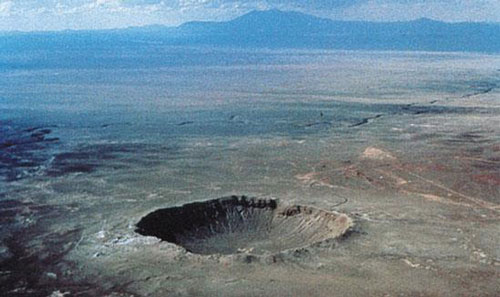| Jun 02, 2014 |
SWF report: 'Near Earth Objects - Responding to the International Challenge'
|
|
(Nanowerk News) Asteroids and comets have long attracted the scientific community because study of these curious astronomical bodies contributes immeasurably to our understanding of the origin and development of the solar system. They also interest the public and scientists alike because of the impact craters they have left on the surfaces of the Moon, the Earth and other planets.
|
|
This booklet ("Near Earth Objects - Responding to the International Challenge"; pdf) is designed to bring into focus the key issues faced by the international community in dealing with the threat of near-Earth objects (NEOs) and the prospect of a celestial body hitting Earth. In particular, it reviews the state of research on asteroids and summarizes the various efforts to mitigate potential future threats. It also identifies areas of future research and development.
|
|
Asteroid and comet impacts on Earth have resulted in the creation of several large craters, one of the largest of which likely precipitated the ultimate destruction of non-avian dinosaurs and many other prehistoric species. The weight of scientific evidence points to the conclusion that some 65 million years ago a large comet struck the Earth in what is now the Northern Yucatan Peninsula, causing a mega-tsunami and sending millions of tons of water vapor and soil high into the atmosphere to form the Chicxulub crater.
|
 |
| The 1.2 kilometer Barringer (or Meteor) Crater Arizona, was created about 49,000 years ago by a small nickel-iron asteroid. Photo by D.J. Roddy and K. Zeller, United States Geological Survey.
|
|
The resulting dust particles high in the atmosphere are thought to have led to a dramatic long-term cooling of Earth, drastically reducing food production over the entire planet. The disrupted food chain likely led to extinction of the dinosaurs.
|
|
Strikes on Earth from asteroids or comets, particularly large ones, are extremely rare. Yet in recent years, asteroids, especially, have become of interest to policy makers because of the growing realization that a special class of asteroids, termed near-Earth objects or NEOs because they travel in orbits near Earth’s orbit, may pose a threat to humans. The February 15, 2013 atmospheric impact of a 17- to 20-meter-sized asteroid near Chelyabinsk, Russia serves as a very public reminder that Earth is not free of potential future asteroid strikes.
|
|
Among other outcomes, that event over Russia has enriched an important debate about how to respond to a potential future asteroid threat. Asteroid impacts can occur anywhere on Earth, but almost uniquely among potential natural disasters, most large asteroid strikes can be averted with sufficient warning and preparation by the world’s space agencies.
|
|
Well before the Chelyabinsk event, Secure World Foundation (SWF) began working with partners such as the Association of Space Explorers (ASE), the Planetary Society, and the United Nations Committee on the Peaceful Uses of Outer Space (UN COPUOS) and its Scientific and Technical Subcommittee (STSC), to help develop international cooperative mechanisms for responding to an asteroid threat.
|
|
That work, in part, has recently led to an important report by the Working Group on NEOs of the STSC, endorsed by UN COPUOS in its annual report to the UN General Assembly. That report contains specific recommendations for creating international institutional mechanisms for identifying and responding to a threatening asteroid. In December 2013, the General Assembly “welcomed with satisfaction the recommendations for an international response to the near-Earth object impact threat” (UN General Assembly Resolution A/Res/68/75, 11 December 2013, para. 8).
|

